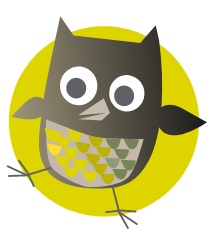Written by Emily Guille-Marrett – Early reading specialist, publisher and Reading Fairy founder.
Please note: all book links lead to more information on Amazon.co.uk
First steps for reading at nursery
My youngest son Albie will be leaving nursery soon to start school. I’ve enjoyed watching and sharing his early reading journey with interest – both at nursery and at home. There’s a lot that parents/carers can do to support their child’s early reading development and the evidence for doing so is overwhelming.
Children who come from a language rich environment and enjoy sharing books at home are more likely to succeed academically. Luckily, encouraging early reading success at home is not complicated. Many important activities can be integrated into the busiest of schedules: sharing books, singing nursery rhymes, talking together, understanding early phonics, and embracing creative and imaginary play.
Top tips to get ready for reading
- Share Nursery Rhymes
One of the most valuable things you can do to get your child ready for reading at nursery is to share traditional nursery rhymes together. There’s a wealth of nursery rhymes to choose from and they all offer a variety of pre-reading skills. My son’s nursery tell us each week which songs and rhymes they are singing with him so we can join in together at home – extending his learning and sharing the fun!
Nursery rhymes are fantastic because they:
Familiarise children with the features of a story e.g. character, setting, plot, structure (a beginning, middle and end).
Explore rich and unusual vocabulary (e.g. ‘tuffett’ and ‘curds and whey’ in Little Miss Muffett).
- Create a strong foundation for early phonics through rhythm and rhyme.
- Can be a sociable activity and encourage early communication – adults and other children can join in the words and actions together.
- Spark a child’s imagination showing that words and pictures can be fun.
Lavender’s Blue by Kathleen Lines and Howard Jones offers a rich collection of traditional nursery rhymes
- Explore Signs and Logos
As children begin to explore the world around them, they start to make associations between signs and logos they see and the idea that they hold meaning. Your child’s key worker or pre-school teacher will be exploring environmental print like this at nursery to encourage pre-reading skills.
Look for and talk about logos, labels and signs at home or out and about: on cereal packets, toy boxes, shops, posters, street signs and so on. You can even have fun cutting out logos and seeing how many your child begins to recognise or talk about even though they can’t decode text yet e.g. “Lego” or “Weetabix”.
- Play I Spy Sounds
Helping your child to get ready for reading at nursery can be great fun! A game that everyone enjoys is “I Spy”. When children first start this game, they will need lots of extra support as they start to make connections between sounds and objects – a strong basis for learning to read later on. It’s useful to scaffold each game with a topic, such as “Animals on the Farm” to give your child a context.
- First, hide some farm animal toys or pictures in a box or bag.
- Next, choose one and without letting your child see it say: “I spy with my little eye, I can hear with my little ear, something beginning with c – and it goes “Moo! Moo! What is it?”
- Give your child lots of praise if they say the right answer and plenty of encouragement if they don’t. If they do struggle you could choose two animal toys and ask what noises the animals make before asking the question again.
- One day, you won’t need to do the animal sound and your child will learn c is the initial letter sound in cow
- Understand First Phonics
When you talk about letters with your child, such as playing games like “I Spy”, try not to use the alphabet names, such as in the ABC Alphabet Song. At nursery your child will be encouraged to use the letter sounds introduced in phonics (e.g. /a/ for apple and /sh/ for sheep). This will give your child a great foundation for learning to read with phonics at school. If you can familiarise yourself with phonics now, it will certainly help your child’s early reading experience at nursery and beyond.
For more information on synthetic phonics and videos showing how to say the phonemes you can visit Oxford Owl’s “Phonics Made Easy” page.
- Talk Together
Speaking and listening is critical in laying the foundations for early reading and writing. I enjoy engaging my boys in conversation all the time and have done since the day they were born. I know that how we engage and communicate with our children in the first few years of life directly impacts their reading. Research shows that the more words a child knows at an early age, the more proficient they are at reading challenging texts later on.
I also believe that conversation in the home encourages thinking skills, concentration and patience. These are great building blocks in the learning to read process.
- Share Books Together
Children who read for pleasure are more likely to succeed academically. A good nursery will be sharing stories and books with your child on a daily basis. You can help your child get ready for reading at nursery by encouraging an enjoyment of reading at home too. Aside from online and high street book shops, libraries are a perfect way for children to experience the joy and independence of choosing their own books to read.
And if your child hasn’t started nursery just yet, why not share a book to help them prepare for their big day, such as:
- Puddles Big Step by Amber Stewart and Layn Marlow
- My First Day by Leilani Sparrow and Dan Taylor
- Going to Nursery by Catherine and Lawrence Anholt
- Going to Playschool by Sarah Garland
- You Are a Reader
Why should a child choose to read if they don’t notice significant adults in their lives reading? Make sure your children see you reading and perhaps talk about why you’re reading (if it comes up naturally). And what is the point of reading if a child doesn’t understand why reading is important. Think about how you read in everyday life and how you can show your child that it is important: reading instruction manuals, reading the news, finding out information, making a cake, online searching, reading a novel for pleasure, and so on.
- Your Child’s Name
One of the first words your child will recognise and read is his/her name. Initially, at nursery, your child is likely to have a peg or tray with their name on it. This is often accompanied by a photo of their face or a familiar picture so they don’t worry when they can’t yet read the word. It won’t be long until your child begins to recognise the first capital letter and soon all the letters in their name.
A wonderful resource for encouraging children to get to know the letters in their name is through personalised picture books, for example from companies such as Lost My Name or Penwizard.
- Creative and Imaginative Play
Play is critical in early child development. In terms of getting ready for reading at nursery, role play is one of the most important activities a child can do. My son Albie enjoys his role-play area at pre-school and I encourage lots of pretend play at home, including easy access to a dressing-up box.
When children play at taking on the role of another person or character, they begin to re-enact real-life scenarios or elements of a story. You will notice that your child starts to mimic phrases that they have learnt with a variety of expressions. As your child role-plays in this way, they will learn the power of language. All these things are a fantastic foundation for learning to read.
- Useful Guides for Parents
Author, poet and educational thought-leader Michael Rosen offers interesting, practical advice on supporting your child’s learning at home in his recent book Good Ideas: How to Be Your Child’s and Your Own Best Teacher. And there is a chapter specifically dedicated to encouraging your child’s reading and writing, which I love.
Another must-read recommended by my Reading Fairy partner Charlotte Raby is Book Smart: How to develop and support successful, motivated readers by Anne E. Cunningham and Jamie Zibulsky. Written by academics for parents, this book captures the latest theory and research on raising a reader and presents it in an accessible way with lots of practical advice too.
More Help from Oxford Owl!
I have thoroughly enjoyed writing this post for Oxford Owl and sharing my knowledge and personal experiences of my son Albie’s early reading journey at nursery. If you found this post helpful as you get your child ready for reading at nursery, do share it with friends and tell us your ideas and experiences on Oxford Owl Facebook or Twitter feed.
For more expert advice on helping your child’s reading at every age and stage, plus a host of free eBooks and activities for your child visit Oxford Owl where you can sign up for further news and advice.

